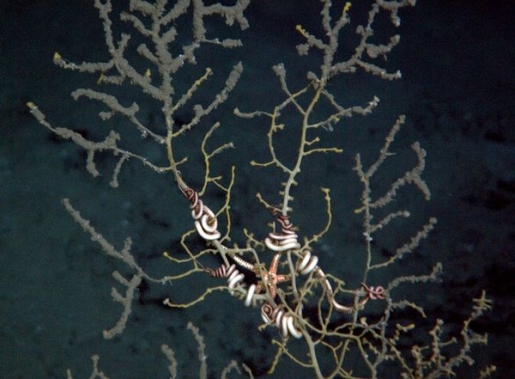
No matter how well the damage was contained during the Deepwater Horizon oil spill (and it wasn’t), there was no way to really tell just how much damage the oil was going to do to the underwater ecosystem of the Gulf of Mexico. It’s already a fairly unhealthy environment thanks to all the industrial pollution and whatnot, but dumping thousands of gallons of oil into an already fragile ecosystem doesn’t help, and an unprecedented die-off of coral seven miles downstream of the now-sealed BP oil well is the smoking gun.
“The coral were either dead or dying, and in some cases they were simply exposed skeletons,” said team member Timothy Shank of Woods Hole Oceanographic Institution. “I’ve never seen that before. And when we tried to take samples of the coral, this black—I don’t know how to describe it—black, fluffylike substance fell off of them.”
Added Charles Fisher of Penn State University: “”The proximity of the site to the disaster, the depth of the site, the clear evidence of recent impact, and the uniqueness of the observations all suggest that the impact we have found is linked to the exposure of this community to either oil, dispersant, extremely depleted oxygen, or some combination of these or other water-borne effects resulting from the spill.”
The dead coral was discovered at 4600 feet, the exact depth of the Deepwater Horizon spill. This is just the beginning to the problems. Experts say the real damage won’t be known for another three to five years.
Tags: deep sea coral, deep sea coral graveyard discovered, Gulf of Mexico, BP oil spill, coral graveyard found in Gulf of Mexico, Deepwater Horizon oil spill, nature, impact of Gulf oil spill, coral covered in oil, Woods Hole Oceanographic Institute, Timothy Shank, Charles Fisher, Penn State University, environmental disasters, the environment







